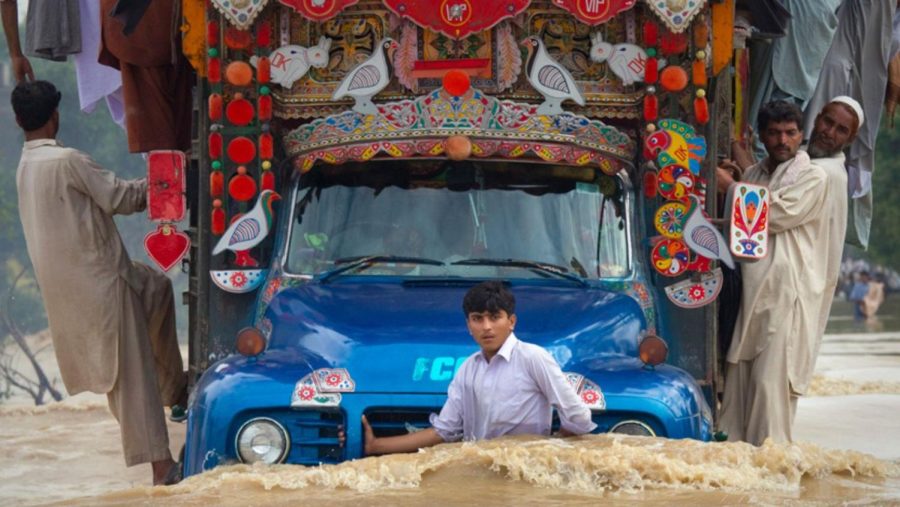Pakistan faces overwhelming flooding and extreme climate issues
Pakistani citizens brace for impact as homes, infrastructure and belongings become submerged in flooding waters. The South Asian country falls at will to harsh weather as one-third of the nation becomes immersed by rainwater alone. Pakistan’s government focuses on the preeminent issue of the international climate crisis and how it relates to the outrageous climate patterns several countries experienced in recent years. As a result of these surging concerns, aid services such as Helping Hand for Relief and Development, The UN Refugee Agency, United Nations International Children’s Emergency Fund, Islamic Relief Worldwide and Oxfam open themselves to the public for donations toward Pakistan support.
September 12, 2022
As flood water rises, citizens of the South Asian country Pakistan leave their belongings behind in their overflowing streets. The mass flooding started in mid-June 2022 and continues to rage on into the Autumn season. As of September 4, the wrathful waters, unfortunately, took the lives of over 1,200 Pakistani citizens, a third including children. In addition, waterborne diseases, malnutrition and drowning continue to affect almost every citizen living in urban Pakistan.
The country’s vulnerability to extreme weather patterns does not stop there. Several South Asian countries developed bizarrely intense heat waves months before the flooding. In recent months, Pakistan’s climate and weather issues trace back to the international climate crisis. According to the Global Climate Risk Index, Pakistan holds eighth place in vulnerability to the current rise of climate. The United Nations climate crisis webpage expands on the abnormal rising temperatures and unsystematic weather patterns within countries such as Pakistan. Manufactured emissions currently produce record-breaking amounts of greenhouse gasses, resulting in extreme amounts of heat-trapping gasses in Earth’s atmosphere.
“Pakistan has to face the climate crisis and the world has to wake up to this reality that a poor country like Pakistan, which is not producing any carbon dioxide, which is not contributing to the greenhouse effect, is actually suffering the worst,” Pakistan’s Finance Minister Miftah Ismail said.
The extremity of Pakistan’s weather will not take a short time to fix. As of September 6, the estimated relief funds resulted in a monumental amount of 10 billion dollars. This colossal casualty poorly adds itself to the country’s concerns with rising poverty and overpopulation. The country’s debts will likely surge to unfathomable heights after relief funds from other nations. In the meantime, military branches will extend their reach to different districts of the drowning country to ensure assistance for residents in need of assistance.
“This situation is the latest in a long string of bad climate disasters that have been happening for decades. As we can see, they seem to be getting worse and worse, but at each step, that awareness hasn’t happened. A large portion of society doesn’t seem to be sinking into the issues taking place. The wildfires in California weren’t enough, the wildfires in Australia weren’t enough, the power grid failing in Texas wasn’t enough and not even Hurricane Maria was enough. I am beginning to wonder what it will actually take for people to hold the crisis with importance,” environmental science instructor Jason Evans said.







